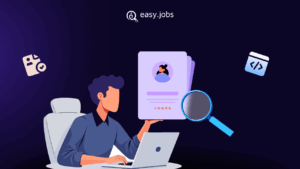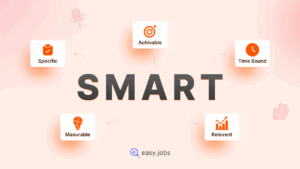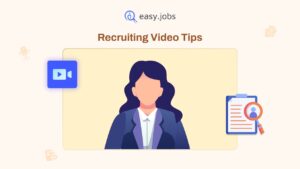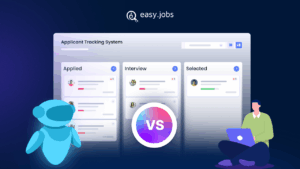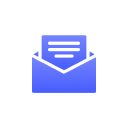Is scheduling interviews a time-consuming nightmare? The constant back-and-forth and calendar conflicts cost recruiters countless hours. Automate Interview Scheduling with AI to regain control. By eliminating this bottleneck, you will improve the candidate experience and give your team back the time they need to focus on what matters most: hiring top talent.

Modern Recruiting Bottleneck: Costs More Than Just Time
Manual interview scheduling is a chaotic, time-consuming process that hinders talent acquisition. This administrative bottleneck silently erodes productivity, increases costs and can cause the loss of top talent. Acknowledging these challenges in coordinating interviews is crucial for finding a more effective approach..
The Anatomy of Interview Schedule Chaos

Recruiters face a relentless cycle of low-value, administrative tasks. They are stuck in endless email chains, manually cross-referencing calendars and juggling multiple applications, a “toggle tax” that drains energy and fragments their focus. These are the classic challenges in coordinating interviews, especially when coordinating with multiple stakeholders across different time zones.
The constant need to align interviewer availability is one of the biggest challenges in coordinating interviews and a major obstacle in hiring. Last-minute cancellations and rescheduling requests compound the problem, forcing recruiters into a constant state of reactive firefighting instead of focusing on high-value tasks like candidate engagement. The failure to Automate Interview Scheduling keeps them trapped in this cycle.
Quantify the Hidden Costs

The consequences of this manual process extend far beyond frustration, manifesting as tangible, measurable business costs.
- Time and Productivity Drain: The most immediate cost is time. The average recruiter or coordinator spends between 8 and 10 hours per week, a full business day, exclusively on managing calendars and dealing with the challenges in coordinating interviews. This is time diverted from high-value activities. Instead of acting as strategic talent advisors, recruiters are relegated to the role of administrative assistants.
- Financial Impact: The inefficiency of manual scheduling translates directly to the bottom line. Companies that successfully Automate Interview Scheduling report significant financial gains, including a decrease in the overall cost-per-hire.
- Talent Loss and Competitive Disadvantage: In today’s competitive talent market, speed is a critical advantage. A slow, cumbersome scheduling process creates delays that give top candidates, who are often entertaining multiple offers, the time to accept a position elsewhere. This leads directly to candidate drop-off, a scenario where a company loses its preferred choice not because of compensation or culture, but because its own internal processes were too slow.
The Ripple Effect on Candidate Experience And Employer Brand

Manual interview scheduling not only wastes time but also silently damages your company’s reputation and growth potential. Here is a quick breakdown of the hidden costs.
Bad First Impressions: Your Reputation is on the Line
For many candidates, the scheduling process is their first real interaction with your company. A slow, messy experience sends a clear message that your organization is disorganized.
- A Make-or-Break Moment: A great scheduling experience can get a candidate excited about your company, while a bad one is a major red flag.
- Public Fallout: Unhappy job seekers often share their negative feedback on review sites. This creates a public record that can scare away future talent.
The Domino Effect: One Bad Habit Creates Many Problems
Manual scheduling is not just one flawed task; it is a root problem that triggers a chain reaction of other issues throughout your hiring process.
- Overwhelmed Recruiters: The process is so time-consuming that recruiters are always rushed and playing catch-up.
- Impersonal Communication: This pressure leads to generic, copy-pasted emails that make candidates feel unimportant.
- Interviewer Burnout: It adds extra administrative work and frustration for your interviewers, leading to burnout.
- A Broken System: Ultimately, this one bad habit makes your entire hiring system slower, weaker and less effective.
The Growth Killer: A Problem That Multiplies
This scheduling problem does not just add up as you hire more people; it gets exponentially worse.
- Small vs. Big: Organizing one interview is easy. Organizing dozens of complex panel interviews for a fast-growing company is a nightmare.
- A Direct Bottleneck: Manual scheduling acts as a direct brake on your company’s growth, physically preventing you from hiring the people you need to succeed.
- Success Makes It Worse: The more successful your company becomes, the more painful and damaging this problem gets.
The decision not to Automate Interview Scheduling creates a domino effect. Overwhelmed recruiters send impersonal emails, and interviewers face burnout from the extra administrative work. This one bad habit makes your entire hiring system slower and less effective. This scheduling problem gets exponentially worse as you grow, acting as a direct brake on your company’s growth.
Deconstruct Automation Engine: How AI-Powered Scheduling Works

AI-powered interview scheduling eliminates manual coordination by integrating with existing workflows and offering candidates self-service capabilities. It transforms the complex, multi-step scheduling process into a simple, automated and smart workflow that streamlines hiring for everyone involved.
The Core Principle: Calendar Integration And Real-Time Sync
The foundation of any plan to Automate Interview Scheduling is its ability to connect with calendars like Google Calendar and Office 365. The AI engine can read the real-time availability of every participant. This continuous, automated syncing eliminates manual checks and prevents double-bookings.
Once connected, the AI engine can read the real-time availability of every required participant, recruiters, hiring managers and panel interviewers. This continuous, automated syncing eliminates the need for manual availability checks and, critically, prevents the double-bookings and scheduling conflicts that plague manual processes.
The system acts as a single source of truth for everyone’s availability, creating a reliable foundation for the entire workflow.
The Candidate Self-Service Workflow
With availability established, the system creates a seamless experience. Let us further explore how does AI interview scheduling work from the candidate’s perspective:
- Automated Trigger: The process begins when a candidate is advanced to the interview stage within the company’s Applicant Tracking System (ATS). This action serves as a trigger that initiates the scheduling workflow automatically, without any manual intervention from the recruiter.
- Personalized Outreach: The system then sends a branded, personalized invitation to the candidate. This communication can be delivered across multiple channels to meet the candidate where they are, including email, SMS, or through a conversational chatbot on the career site.
- Candidate Selection: The candidate clicks a unique, secure link in the invitation, which directs them to a scheduling portal. Here, they are presented with a curated list of available interview slots.
These time slots are not just random open blocks on a single calendar; they are pre-vetted, intelligent recommendations that are guaranteed to work for all required interviewers.
- Instant Confirmation: The candidate simply selects the time that works best for their schedule. The moment they click to confirm, the system instantly books the interview on everyone’s respective calendars.
It automatically generates and sends the official calendar invitations and confirmation messages to all parties. The entire process, which could have taken days of back-and-forth emails, is completed in minutes.
Beyond Simple Booking: The Role of AI And Advanced Logic
Modern platforms leverage AI to handle complex scenarios. Let us dive deeper into how AI interview scheduling works for advanced cases. It can manage multi-person panel interviews, sequential loops, and large-scale group interviews, coordinating dozens of calendars and room bookings.
Some systems can even perform intelligent interviewer selection, balancing the workload across a team to prevent burnout and solve the persistent challenges in coordinating interviews. Automated rescheduling and reminders are other key features that reduce no-shows..
- Complex Interview Scenarios: Advanced systems are engineered to manage the most challenging scheduling logistics, including multi-person panel interviews, sequential multi-day interview “loops,” and large-scale group interviews for hiring events or campus recruiting “Superdays“.
The AI can coordinate dozens of calendars, room bookings and video conferencing links simultaneously.
- Intelligent Interviewer Selection: The most sophisticated platforms do more than just find an open slot. They can perform intelligent interviewer selection. For example, the system can be configured to identify the best-fit interviewer for a specific role based on their skill set, department, or level of interview training.
It can also intelligently balance the interview load across a team, ensuring that no single person becomes a bottleneck or suffers from burnout.
- Automated Rescheduling and Reminders: These systems fully automate the high-friction tasks that consume significant recruiter time. Suppose a candidate or interviewer needs to reschedule. In that case, they can do so through the self-service portal and the AI assistant will manage the entire rebooking process without requiring recruiter involvement.
The platform also sends a cadence of automated reminders to all participants leading up to the interview, a simple but highly effective feature that significantly reduces costly no-shows.
Seamless Integration with the HR Tech Stack
Most advanced interview scheduling software is not designed to work all by itself. Instead, they are built to connect deeply with the ATS or HR software you already use, creating one smooth, connected system.
These tools integrate with major platforms like easy.jobs, Workable etc. This connection is a two-way street, ensuring all your information stays perfectly in sync.
- When an interview is booked, rescheduled or canceled, the candidate’s file in your central HR system is updated automatically.
- This lets your recruiters manage everything from one place, eliminating the need to jump between different apps and preventing data-entry errors.
The Real Magic of AI: Solve Scheduling Puzzles 🧩
A key part of understanding how AI interview scheduling works is recognizing its power as a problem-solver. It instantly juggles the candidate’s availability, the recruiter’s schedule, a whole panel of interviewers and different time zones to find the optimal time, solving complex challenges in coordinating interviews in seconds.
A basic tool can see one person’s calendar, but AI acts like a master problem-solver, instantly juggling variables like:
- The candidate’s availability
- The recruiter’s schedule
- A whole panel of interviewers
- Different time zones and meeting rooms
It processes all these details in seconds to find the best time for everyone. A mental juggling act that is overwhelming and easy to mess up for a human.
Putting Candidates in the Driver’s Seat 🚗
Letting candidates schedule their own interviews is a powerful way to improve candidate experience scheduling. It shows you respect their time and autonomy, making your company look modern and people-focused. This small change can be your secret weapon when you Automate Interview Scheduling.
It shows you respect their time and autonomy, making your company look modern, flexible and genuinely focused on people. This small change can be your secret weapon for attracting top talent.
The ROI of Automation: A Framework to Measure Value

Adopting automated interview scheduling is not just about getting a new tool. It is a smart investment that pays you back in many ways. Let us break down the value it delivers across four key areas: efficiency, speed, experience and quality to find out the ROI in automation your interview scheduling.
1: Give Your Team Its Most Valuable Asset Back: Time ⏳
The biggest win when you automate interview scheduling and it gives your team time back. Recruiters can focus on sourcing candidates, building talent pipelines and coaching hiring managers.
Instead of being stuck managing calendars, your recruiters can now focus on what really matters:
- Proactively sourcing great candidates.
- Building strong talent pipelines for the future.
- Engaging with passive talent who are not actively looking.
- Coaching hiring managers to make better decisions.
This also dramatically reduces the “interview tax” on your key employees (like engineers or managers), who can participate in hiring without the stressful administrative burden, which helps keep them happy and focused on their main jobs.
2: Win the Race for Top Talent by Hiring Faster 🏃♀️
Nowadays, speed is your secret weapon. Automation eliminates the long delays from manual scheduling, dramatically cutting down your time-to-hire.
This speed is critical because it gives your competitors less time to steal your best candidates. When you can move a qualified person from application to interview in minutes instead of days, you massively increase your chances of landing your first-choice talent.
3: Enhance the Candidate Experience to Build Your Brand
A seamless process makes a fantastic first impression. By empowering candidates with self-service options, you improve candidate experience scheduling and demonstrate that your company is flexible and genuinely cares about people is a powerful way to make a fantastic first impression and build your employer brand.
- Empower Your Candidates: Allowing candidates to schedule their own interviews makes them feel respected and in control.
- Provide Peace of Mind: Automated confirmations and reminders ensure candidates never feel lost or ignored in the process.
- Look Modern and Professional: This smooth experience shows that your company is flexible and genuinely cares about people, leaving a positive impression no matter the hiring outcome.
4: Make Smarter, Fairer Hires with Data 📊
Automation provides clear data on reschedule rates, no-shows and interviewer workloads, helping you fix hidden roadblocks. It also promotes equity by offering all available times equally, creating a more inclusive process for all candidates and overcoming traditional challenges in coordinating interviews.
Beyond just being smarter, the process also becomes fairer.
- Promote Equity and Inclusion: Manual scheduling can be accidentally biased. A recruiter might only offer traditional 9-to-5 time slots, which do not work for everyone. Self-service scheduling presents all available times equally to every candidate. This creates a more accessible and inclusive process for parents, caregivers, or people who can not easily leave their current job, turning a simple upgrade into a meaningful step toward your DEI goals.
An often-overlooked benefit of automation is retaining your best employees. For non-recruiters like engineers, interviewing is a stressful “tax” on top of their main job. Automation removes this chaotic burden by respecting their time and making participation seamless, which boosts their job satisfaction and helps you keep valuable staff.
From Implementation to Optimization: A Best Practices Guide
Successfully leveraging automated interview scheduling requires more than simply purchasing software. It demands a thoughtful approach to implementation and a commitment to continuous optimization.
To transform scheduling from a bottleneck into a strategic asset, organizations should follow a clear set of best practices designed to maximize efficiency, enhance the candidate experience and ensure long-term success.
Step 1: Get Your Team Onboard (Change Management)
The first step to automating interview Scheduling is getting buy-in. Provide excellent training and build trust in the system to ensure your team does not try to “work around” the new tool.
- Provide great training and show clear examples of how reliable the system is.
- Build trust by setting clear rules for when a human should step in versus when to let the automation do its job.
- Communicate clearly about the benefits to them and the company.
Step 2: Standardize Your Process Before You Automate
A common mistake is trying to automate a messy process. Automation won’t fix a broken workflow; it will just make the problems happen faster.
The first critical step is to map out and standardize your interview process.
- Create clear workflows for each interview type (phone screen, technical round, final panel, etc.).
- Define the key details for each stage: Who is involved? How long should it be? What information is needed?
- Set clear goals (SLAs), like ensuring every qualified candidate gets a scheduling link within 24 hours.
This creates a stable foundation for automation to succeed.
Step 3: Make It All About the Candidate ⭐
The ultimate goal is to improve candidate experience scheduling. Utilize all communication channels to help candidates feel confident and prepared by providing them with agendas and interviewer bios.
- Provide helpful info: Include a clear interview agenda, bios of the interviewers, and links to company information.
- Offer true flexibility: Configure the system to offer a wide variety of times and days.
- Handle the details: Make sure the system automatically converts time zones to avoid any confusion.
Step 4: Build a Deep Bench of Interviewers
To avoid bottlenecks, train a large pool of interviewers. This is key to overcoming the challenges in coordinating interviews when key people are unavailable. To prevent this bottleneck, you need to be proactive.
- Build a deep bench: Train and certify a large pool of interviewers across different departments.
- Prevent burnout: Rotate interviewers and use the platform’s data to track their workload.
- Stay prepared: Having qualified alternates ready to go is key to keeping the hiring process moving quickly.
Step 5: Measure, Improve, Repeat 📊
As the saying goes, “If you can’t measure it, you can’t improve it.” Your scheduling platform is a goldmine of data that you should use to get better over time.
Start tracking these key metrics:
- Time-to-Schedule: How long it takes for an approved candidate to get an interview on the calendar.
- Reschedule Rate: The percentage of interviews that get moved. A high rate might signal a problem.
- No-Show Rate: The percentage of candidates who miss their interview. Automated reminders should make this number very low.
- Time Spent on Scheduling: A direct measurement of how much administrative time you are saving.
By regularly reviewing these metrics, talent acquisition leaders can identify friction points in the process and make data-driven adjustments to optimize their strategy over time.
A successful launch hinges on helping your team trust the automation. Recruiters used to manual control may resist or work around the new system, negating its benefits. Overcome this with clear training, proof of the system’s reliability and guidelines on when to intervene. This human focus is essential for success.
Navigating the Solution Landscape: An Overview of Interview Scheduling Tools

The market for interview scheduling software is vast and varied, ranging from simple, free tools to sophisticated, enterprise-grade AI platforms. Selecting the right solution depends entirely on an organization’s specific needs, including its hiring volume, interview complexity, budget and existing technology stack. To navigate this landscape effectively, it is helpful to group the available tools into three distinct categories.
Category 1: Free & Freemium Schedulers (The Starting Point)
This category includes tools that are primarily designed for individual users or small teams with straightforward scheduling needs. They offer a simple and effective way to eliminate the initial back-and-forth of finding a meeting time.
- Ideal Use Case: Individual recruiters, small businesses, or teams with low hiring volume and simple one-on-one interview processes.
- Key Features: Customizable booking pages, basic calendar syncing (often with one calendar), and video conferencing integration (e.g., Zoom, Google Meet).
- Pros: The primary advantage is cost, as these tools offer a robust set of features for free or at a very low price point. They are generally easy to set up and user-friendly for both the recruiter and the candidate.
- Cons: These tools are not built for the complexities of modern recruiting. They typically lack direct ATS integration, cannot handle complex panel or multi-stage interviews and may have limitations on branding or include advertisements on free plans.
- Example Vendors: YouCanBookMe, Calendly (Free/Basic Tiers).
Category 2: Integrated ATS & CRM Schedulers (The System of Record)
Many modern Applicant Tracking Systems (ATS) and Candidate Relationship Management (CRM) platforms now include built-in scheduling functionality. This approach embeds the scheduling workflow directly within the organization’s primary system of record for recruiting.
For example, some systems, like easy.jobs allow recruiters to configure a dedicated “Remote Interview” stage within their hiring pipeline, which can then be used to schedule interviews directly through integrated video conferencing tools like Google Meet and Zoom.
- Ideal Use Case: Organizations that prioritize a single, unified platform for all recruiting activities and want to ensure seamless data flow without managing separate tools.
- Key Features: Calendar integration, candidate self-scheduling portals, and automated email templates, all managed within the ATS interface.
- Pros: The main benefit is seamless integration. All scheduling activities are automatically logged against the candidate record, creating a centralized and unified data environment. This eliminates the need for manual data entry and ensures a consistent workflow for the recruiting team.
- Cons: While convenient, the scheduling features within an ATS may be less powerful or sophisticated than those offered by specialized, best-of-breed platforms. They may lack the advanced AI, complex panel coordination capabilities, or deep analytics of a dedicated enterprise tool.
Category 3: Enterprise-Grade AI Platforms (The Powerhouse)
This category represents the cutting edge of scheduling technology. These are specialized, AI-powered platforms designed specifically to solve the most complex scheduling challenges at scale for mid-market and large enterprise organizations.
- Ideal Use Case: Companies with high hiring volume, complex interview processes (e.g., multi-person panels, multi-day loops) and a strategic focus on optimizing recruiter efficiency and candidate experience.
- Key Features: Advanced AI for intelligent time slot recommendation, complex panel and sequence scheduling, intelligent interviewer selection and load balancing, deep ATS/HCM integration, conversational AI chatbots and robust analytics dashboards.
- Pros: These platforms are purpose-built to handle extreme complexity with minimal human intervention, capable of automating 90% or more of all coordination tasks. They provide significant, measurable ROI through increased recruiter productivity, accelerated hiring velocity, and an enhanced candidate experience.
- Cons: The power and sophistication of these platforms come at a higher cost. They also typically require a more involved implementation and change management process compared to simpler tools.
Transform Scheduling from an Administrative Burden to a Strategic Advantage
The traditional approach to interview scheduling is an outdated and burdensome practice that hinders modern hiring. This manual process, characterized by endless back-and-forth emails, wastes valuable time, creates a frustrating experience for candidates and puts companies at a significant competitive disadvantage in the race for top talent. It is a major roadblock that can and should be solved rather than being accepted as a necessary cost of doing business.
By embracing AI-powered automation, organizations can transform scheduling from an administrative chore into a strategic asset. This shift enables recruiters to transition from administrative tasks to strategic advisors, allowing them to expedite hiring by engaging top candidates before competitors. Ultimately, investing in an intelligent and candidate-focused scheduling system is a strategic necessity that improves efficiency, enhances brand perception, and provides the competitive advantage needed for a company’s growth.
If you found this blog helpful, subscribe to our blog for more insights on improving your candidate experience, leveraging recruitment automation and giving your team back valuable time. To connect with peers and share strategies, join our Facebook Community of HR leaders and recruiters dedicated to building a smarter hiring process.

